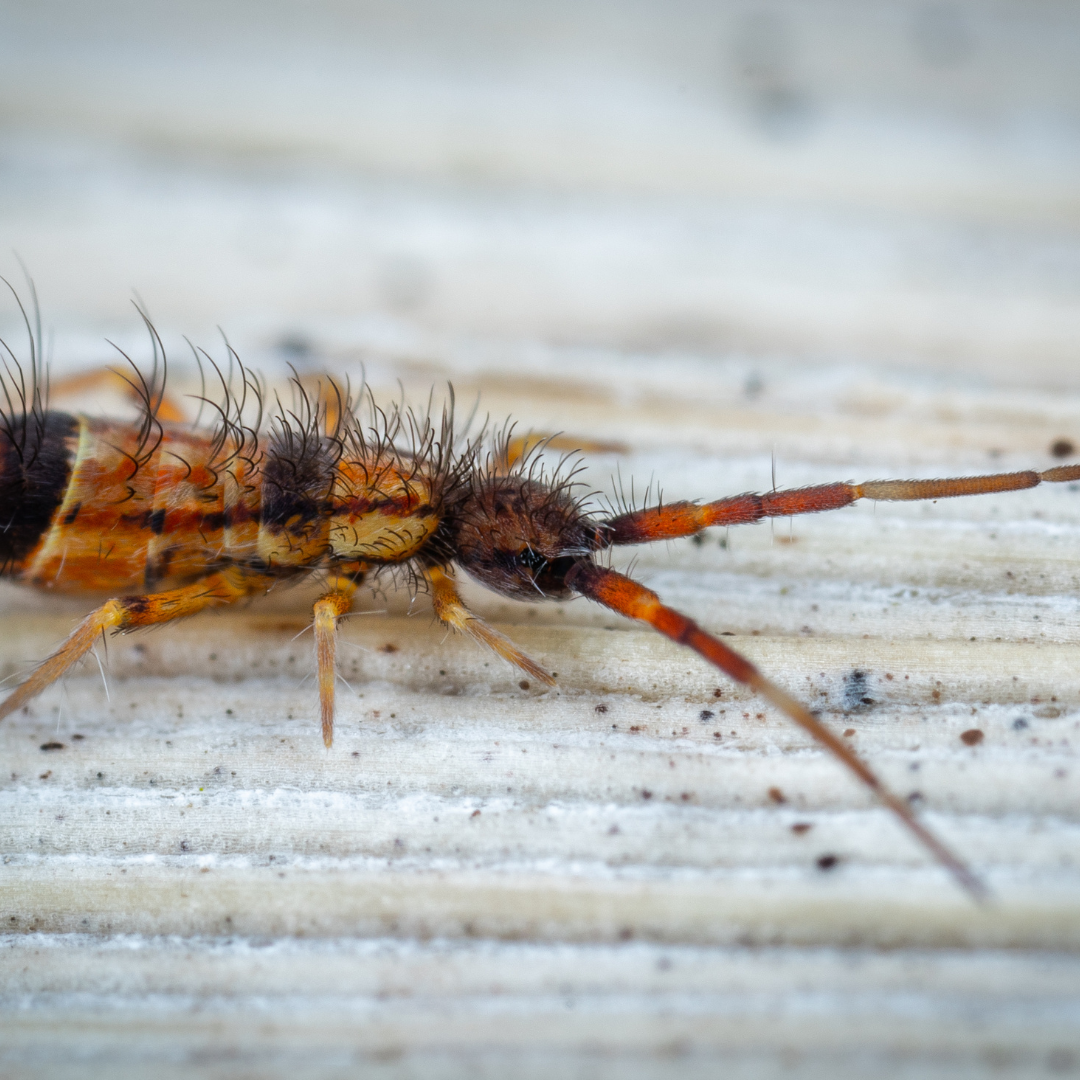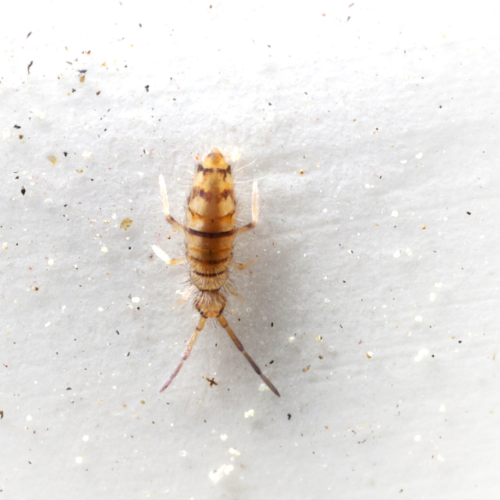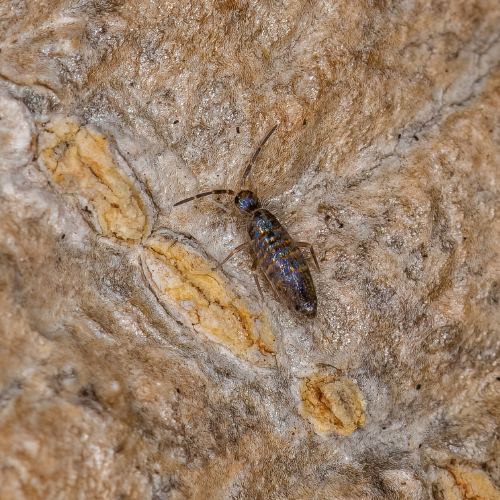Springtails
Introduction to
Springtails are tiny, moisture-loving insects often found in soil, leaf litter, and other damp environments. While generally harmless, their presence in large numbers indoors can be unsettling. This guide provides detailed information on how to recognize, understand, and manage springtails, including preventive measures and professional pest control solutions.
Recognition
Springtails are minute, usually less than 1/8 inch long, and come in various colors, including white, gray, and light brown. They are wingless and possess a unique structure called a furcula, located on their abdomen, which they use to “spring” into the air as a means of escape. This springing action is a key characteristic for identifying springtails. They have soft, elongated bodies and are often found in moist environments, both indoors and outdoors. Under magnification, springtails may appear to have a somewhat segmented body, giving them an insect-like appearance despite their small size.
Biology
Springtails belong to the subclass Collembola and are among the most primitive of all hexapods. They undergo simple metamorphosis, developing from eggs to nymphs to adults without a pupal stage. Females lay eggs in moist soil or organic matter, and the young nymphs emerge looking like smaller versions of the adults. Springtails feed on decaying organic matter, fungi, algae, and bacteria, playing a crucial role in soil health and decomposition. Their populations can grow rapidly under favorable conditions, particularly in environments with high moisture and abundant organic material.
Habits
Springtails are moisture-loving creatures and are often found in soil, leaf litter, under rocks, and in other damp environments. Indoors, they are commonly seen in basements, bathrooms, kitchens, and around houseplants, where they seek out humidity. Springtails do not bite, sting, or transmit diseases, making them harmless to humans and pets. However, their presence in large numbers can be a nuisance. They are attracted to light and may congregate around windows and doors. Springtails are most active during wet weather and can sometimes be seen floating on the surface of puddles and swimming pools.
Prevention
Preventing springtail infestations involves reducing moisture and eliminating entry points. Use dehumidifiers in damp areas like basements and bathrooms to keep these spaces dry. Ensure proper ventilation in attics, crawl spaces, and other areas prone to humidity. Seal cracks and gaps around doors, windows, and foundations to prevent springtails from entering. Fix any leaks or plumbing issues promptly to reduce excess moisture. Regularly inspect and maintain houseplants, avoiding overwatering to prevent moist soil conditions that attract springtails. Cleaning and decluttering indoor spaces can also help minimize potential hiding spots.
Professional
When springtails become a persistent problem, professional pest control services can offer effective solutions. STL Pest Control provides comprehensive inspections and tailored treatment plans to address springtail infestations. Their methods include moisture control recommendations, sealing entry points, and targeted treatments to eliminate existing springtails. Professional services ensure that the infestation is managed efficiently and safely, reducing the inconvenience and potential distress caused by these pests.



Our Office









